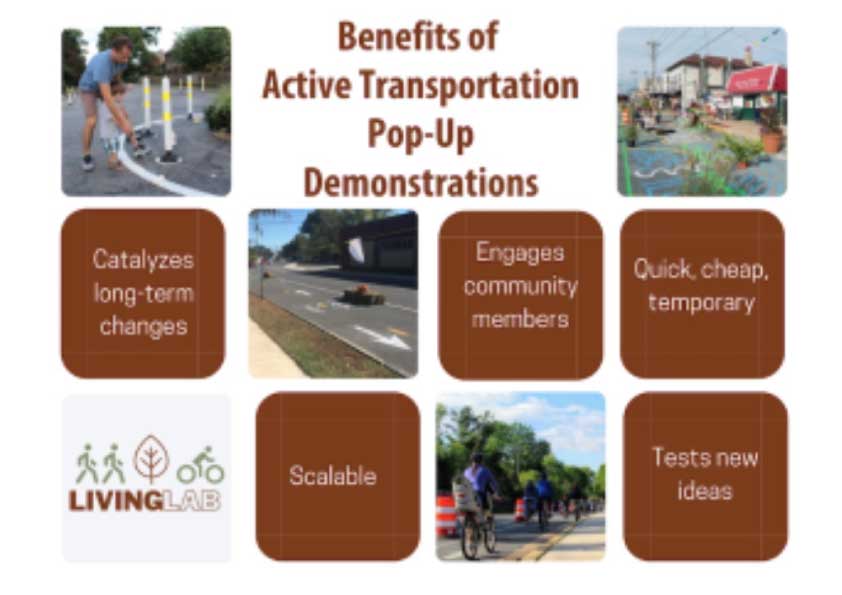
Living Lab seeks to assist Delaware local governments, community-based organizations (CBOs), and school districts in planning, executing, and evaluating active transportation pop-up demonstrations. Types of pop-up demonstrations are described below.
Credit: Heather Dunigan, WILMAPCO
Traffic Calming
Traffic calming uses physical design and other measures to improve safety for motorists, pedestrians and cyclists. Temporarily changing the design of the built environment can encourage drivers to slow down and remind them that pedestrians and bicyclists are also roadway users.
Think ways to reduce speeding and reallocate space through design elements such as buffered bike lanes, mini traffic-circles, curb extensions, parklets, mid-block crossings, streetscaping, and/or widening sidewalks with active uses like café seating.
Complete streets are planned, designed, built, and maintained to safely accommodate travelers of all ages and abilities—motorists, pedestrians, bicyclists, and public transit users—including children, non-drivers, older adults, people who don’t own cars, and persons with disabilities. Think pedestrian improvements, buffered bike lanes, comfortable and accessible public transportation stops, frequent and safe crossing opportunities, median islands, curb extensions, narrower travel lanes, streetscaping, or mini-traffic islands.
Safe routes advances healthy and equitable transportation options by creating safer environments to walk, bicycle, or roll to schools, parks, and/or everyday destinations. Short-term measures can target improvements to the accessibility and connectivity of sidewalks, on-street bicycle facilities, trails and paths, curb ramps, and street crossings to community destinations. Activity-Friendly Spaces Community-centered design is used to reimagine activity-friendly outdoor spaces, activate underused places, bring people otogether, and achieve a stronger sense of place. Using the Better Block approach, community leaders and members can be empowered to reshape and reactivate built environments to promote the growth of healthy, vibrant neighborhoods. Think pocket parks, parklets, open streets with café seating, placemaking events, traffic-calming measures, and/or sculpture gardens.
Click on the content below to explore types of pop-up demonstrations that can be planned in Delaware, ways to partner with the UDD Living Lab Research Group and DelDOT on an active-transportation pop-up demonstration, as well as resources to engage community members in planning a demonstration.
University of Delaware Dover researchers — including faculty, postdoctoral researchers and graduate students — are invited to participate in an exciting program designed to strengthen their ability to explain their work to broader audiences, fostering greater understanding and appreciation of UDD research and its impact. In a recent survey, many UDD researchers expressed keen interest in learning new approaches to c